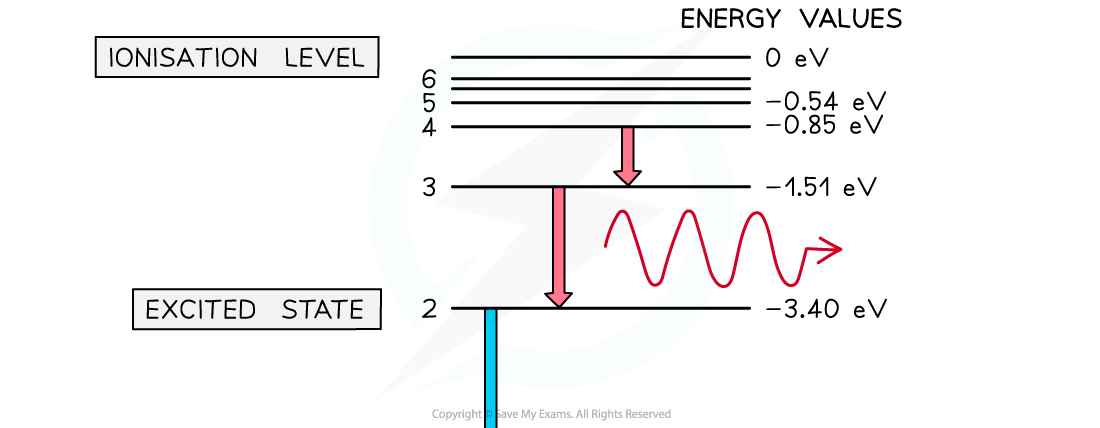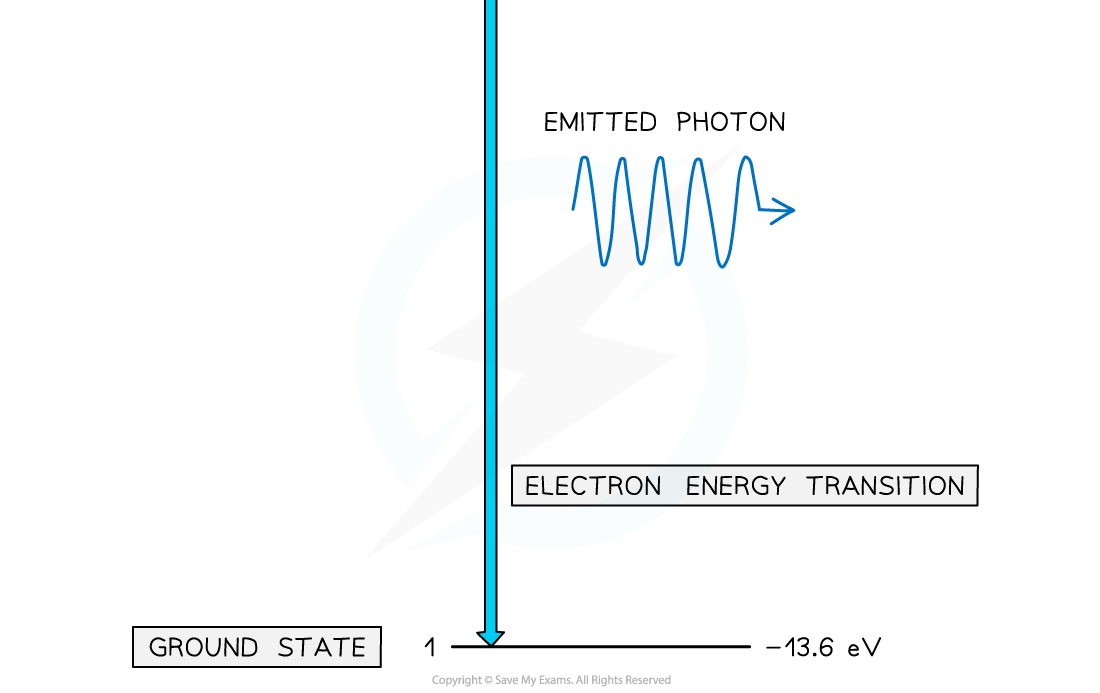Discrete Energy Levels
The Photon Model
- Photons are fundamental particles that make up all forms of electromagnetic radiation
- A photon is a massless “packet” or a “quantum” of electromagnetic energy
- What this means is that the energy is not transferred continuously but as discrete packets of energy
- In other words, each photon carries a specific amount of energy, and transfers this energy all in one go
Calculating Photon Energy
- The energy of a photon can be calculated using the formula:
E = hf
- Using the wave equation, energy can also be equal to:

- Where:
- E = energy of the photon (J)
- h = Planck's constant (J s)
- c = the speed of light (m s-1)
- f = frequency (Hz)
- λ = wavelength (m)
- This equation tells us:
- The higher the frequency of EM radiation, the higher the energy of the photon
- The energy of a photon is inversely proportional to the wavelength
- A long-wavelength photon of light has a lower energy than a shorter-wavelength photon
Atomic Energy Levels
- Electrons in an atom can have only certain specific energies
- These energies are called electron energy levels
- They can be represented as a series of stacked horizontal lines increasing in energy
- Normally, electrons occupy the lowest energy level available, this is known as the ground state
- Electrons can gain energy and move up the energy levels if it absorbs energy either by:
- Collisions with other atoms or electrons
- Absorbing a photon
- A physical source, such as heat
- This is known as excitation, and when electrons move up an energy level, they are said to be in an excited state
- If the electron gains enough energy to be removed from the atom entirely, this is known as ionisation
- When an electron returns to a lower energy state from a higher excited state, it releases energy in the form of a photon


Electron energy levels in atomic hydrogen. Photons are emitted when an electron moves from a higher energy state to a lower energy state
Worked Example
Explain how atomic spectra provide evidence for the quantisation of energy in atoms.
Step 1: Outline the meaning of atomic spectra
-
- Atomic spectra show the spectrum of discrete wavelengths emitted or absorbed by a specific atom
Step 2: Describe the relationship between energy and wavelength
-
- Photon energy is related to frequency and wavelength by
- Therefore, photons with discrete wavelengths have discrete energies equal to the difference between two energy levels or
- Photon energy is related to frequency and wavelength by
Step 3: Explain how atomic spectra give evidence for the quantisation of energy
-
- Photons arise from electron transitions between energy levels
- This happens when an electron is excited or de-excited from one energy level to another, by either emitting or absorbing light of a specific wavelength
- Since atomic spectra are made up of discrete wavelengths, this shows that atoms must contain discrete, or quantised, energy levels
